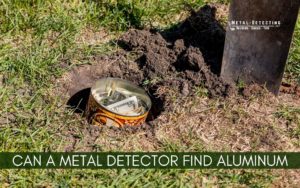Have you ever had a passion for ancient artifacts and dreamed of being an archaeologist, or perhaps read romantic stories of buried treasure and dreamed of finding your own treasure chest?
Metal detecting enthusiasts share this kind of passion and more and more people are pursuing this exciting hobby and finding their own treasure.
If you are thinking of becoming a metal detectorist, then the first thing you need to do is look for the right kind of metal detector.
Don’t worry, you needn’t break the bank and purchase the most expensive technology straight out! Here are some great tips for buying your first metal detector
Five Basic Types of Metal Detectors
Simple “transmit & receive” system detectors, which can differentiate between ferrous items and non-ferrous items. The problem with these detectors is that they don’t function properly in areas where the soil is highly mineralized, as a result, they’ve largely been phased out. Rather don’t buy an old second hand machine from the 1960s or 70s as they are likely to be of this type.
Metal Detectors that use oscillation of beat frequency to detect metals. Metal detectors with this system are the least expensive in the market and can be purchased brand new for a hundred dollars or less. The downside of these types of machines is that they are unable to differentiate between different types of metals – leading to a lot of false-positive detections.
VLF technology or “very low frequency” technology detectors. Metal detectors that use VLF technology are able to detect different kinds of metals, including silver and gold.
The old “transmit & receive” detection system was given new life by some manufacturers. To control false-positive detections, they combined the T & R system with VLF technology so highly mineralized soils can be explored without having to deal with too many false-positive detections. The detection of trash or junk in the ground is also reduced with hybrid T & R/VLF metal detectors.
The fifth and last type of metal detector utilizes pulse induction to track down metals buried in the ground. Pulse induction detectors have the same weakness as T & R detectors (so they aren’t great for regular detecting). However, Pulse induction detectors are experts when it comes to mineralized areas, and thus can be used underwater (if protected with waterproof casing).
Tips for Buying a Detector
For some time now, people have thought that the depth of detection is the most important feature of a metal detector, but the truth of the matter is that almost all metal detectors (save for some very expensive ones) have the same depth of detection – so don’t focus too much on depth.
Look for features that will help you during an actual hunt, for example, it would be great if the metal detector provided a visual readout of any detection so you’ll an idea of what it has picked up while you were walking.
Ease of use is another important factor. Some people buy the top-of-the-line metal detectors and never get to use them because the gadgets are too complicated. Instead of sniffing the ground for gold, iron, silver coins, and relics, the expensive (and complicated) machines stay in closets for years because the owner has no time to read the manuals.
Experience is the best teacher, so talk to some old hands at metal detecting to gain from their experience with different types of machines.
There are dozens of brands out there, all vying for the attention of this small market. Don’t be confused by all the hype. Make a sound decision based on the features and the price of the metal detector, and not on any sales statements.
Choose a metal detector from a company that has a long-standing reputation for innovation and product improvement. Don’t settle for one model after your primary research. Instead, choose three or more models that you like and go to the store so you can try the detectors yourself.
Once you have your machine, you are ready to get out there and start treasure hunting.

